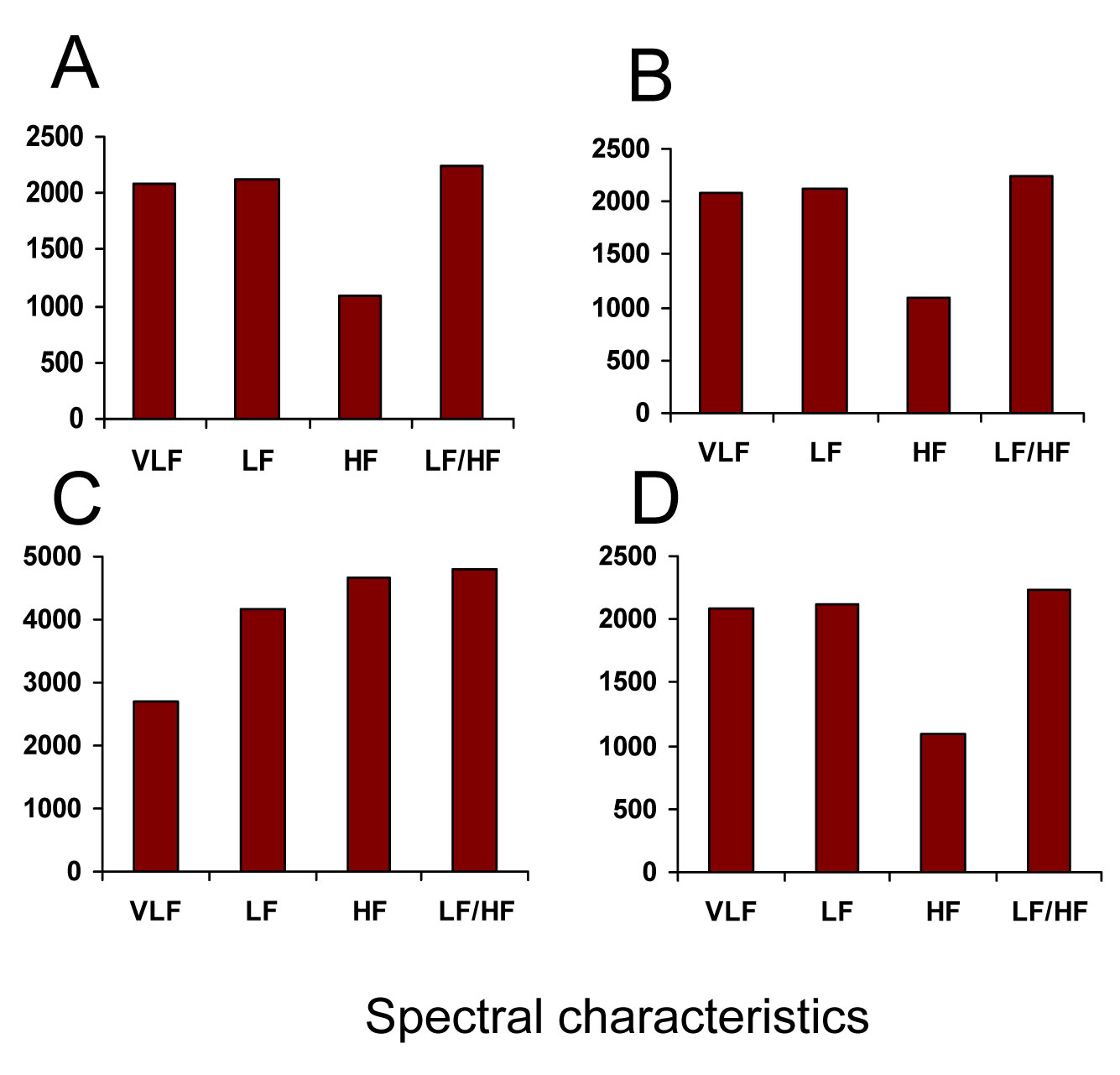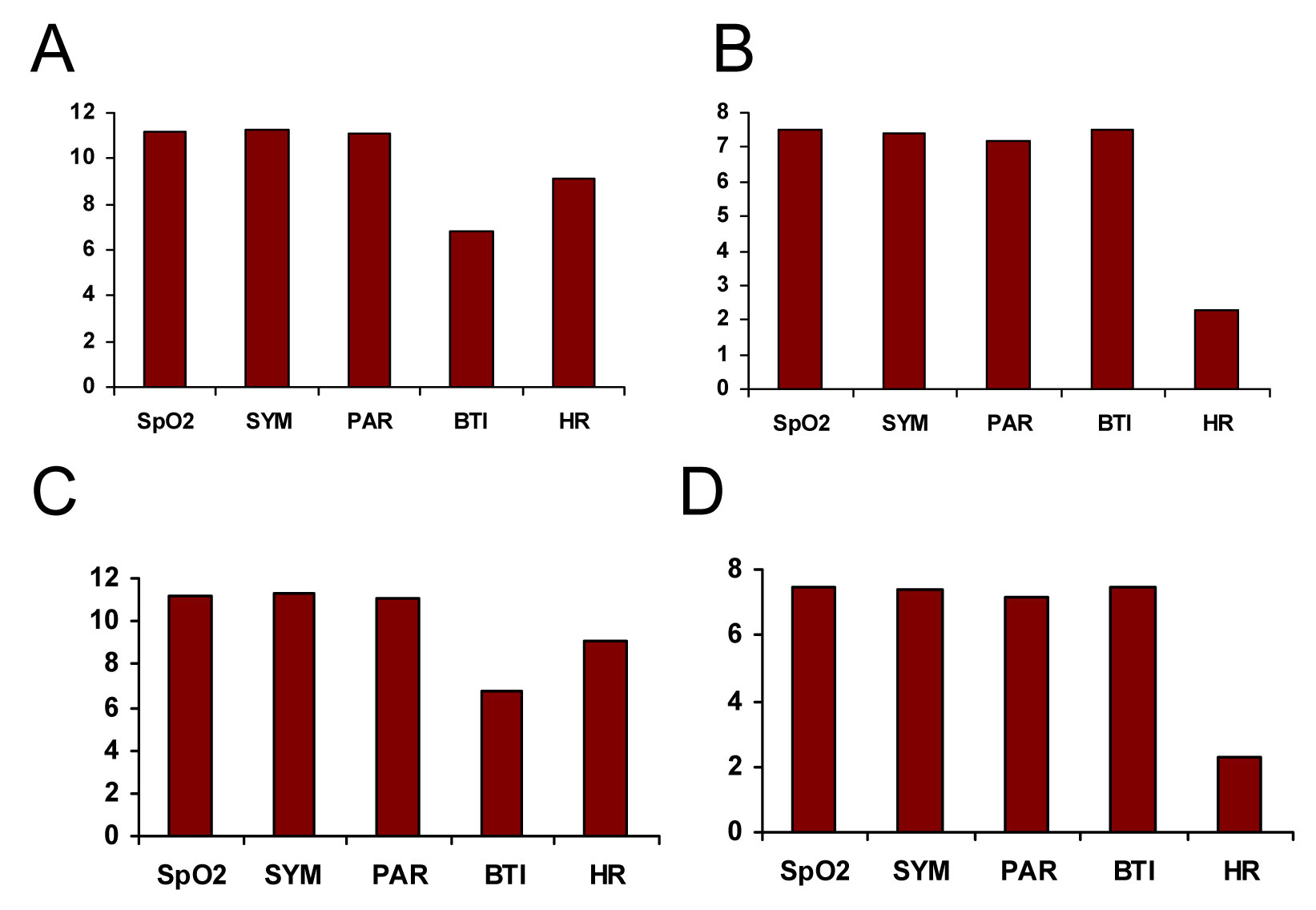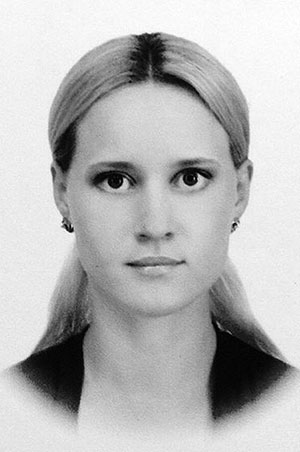The Effect of Physical Load on Heart Rate Variability Parameters of Young Men at Latitudinal Relocation
Фотографии:
ˑ:
O.N. Shimshieva, postgraduate
S.I. Loginov, professor, Dr.Biol.
Surgut State University, KhMAR-Yugra, Surgut
Key words: physical load, sprint, variability.
Introduction. The need to study the training effects of physical load and assessment of their effects on the body in view of biophysics and physiology is obvious [5]. In the urbanized Yugra North training process in athletics is carried out in uncomfortable natural climatic conditions [4]. This circumstance makes athletes of the Khanty-Mansi Autonomous region travel to training camps in the South of Russia from time to time. However, when travelling to other geographic latitudes the body of a young athlete is undergoing major physiological changes, which have been insufficiently studied up to date [3].
The purpose of the study was to examine the features of changing parameters of heart rate variability of young male athletes under the influence of physical load at latitudinal relocations.
Materials and methods. 15 young men aged 15-18 years, specializing in the sprint types of athletics, were involved in the study. All of them were members of the team of KhMAR-Yugra and first class athletes. Spectral characteristics of heart rate variability were studied before and after a standardized physical load (SPL) in the form of 30-second run in place lifting hips high using the pulse oximeter "Elox-02 -020" (Samara, Russia). Pulsogram was being recorded for 5 min in the sitting position at relative rest and after SPL. A total of 4 data clusters were acquired, and we labeled them as "Surgut-departure", "Kislovodsk-arrival", "Kislovodsk-departure", "Surgut-arrival". The obtained data were processed by means of multidimensional phase space according to the method [2].
Results. Let us study the chaotic nature of the body system change in young males at rest (before load). Upon arrival in Kislovodsk there was a fourfold increase of the volume of quasi-attractors at rest, i.e. the system reacts to latitudinal relocation by the increase in the chaotic nature. At the end of TC the system did not change much. It may be assumed that the adaptive changes that occurred in the athletes' organisms right after the flight had a steady nature and did not alter much by the end of the training camp. Upon flying back (cluster "SA"), the volume of quasi-attractor at rest decreased thirteen times, and if compared to the cluster "SD" data – three times. That is, upon arrival the chaotic nature of the system was minimal as compared to other data clusters. This may indicate maximal mobilization of the athletes’ functional reserves and minimization of chaos.
The standardized load in different places of stay had different impact on the young athletes' organisms. The total volume of quasi-attractor within the cluster "SD" did not change in the young males under the influence of SPL (Table 1), which proves the small-scale chaotic nature of the system in the beginning. Similar load implemented within the first days after arrival in Kislovodsk caused the twofold increase in the quasi-attractor volume, which corresponds to the larger-scale chaotic nature of the system.
Table 1. Results of identification of quasi-attractors parameters in the 4-dimensional phase space of spectral indices of variation pulsogram in young males before and after physical load.
|
Intervals |
Surgut (departure) |
Kislovodsk (arrival) |
Kislovodsk (departure) |
Surgut (arrival) |
||||
|
Before |
After |
Before |
After |
Before |
After |
Before |
After |
|
|
Х1 |
13995 |
27442 |
20653 |
19959 |
19017 |
4043 |
6081 |
3407 |
|
Х2 |
7645 |
5711 |
6709 |
18307 |
15356 |
5954.0 |
4945 |
6160 |
|
Х3 |
7036 |
4686 |
6540 |
10980 |
8625 |
7258.0 |
6890 |
11188 |
|
Х4 |
4.41 |
4.56 |
12.68 |
6.31 |
5.28 |
2.09 |
3.72 |
3.62 |
|
VX |
3.32×1012 |
3.35×1012 |
11.5×1012 |
25.3×1012 |
13.30×1012 |
0.37×1012 |
0.77×1012 |
0.85×1012 |
|
Asymmetry |
Before |
After |
Before |
After |
Before |
After |
Before |
After |
|
rX1 |
0.23 |
0.37 |
0.30 |
0.21 |
0.25 |
0.12 |
0.12 |
0.05 |
|
rX2 |
0.11 |
0.15 |
0.03 |
0.20 |
0.22 |
0.16 |
0.18 |
0.08 |
|
rx3 |
0.29 |
0.16 |
0.28 |
0.13 |
0.20 |
0.28 |
0.33 |
0.24 |
|
rx4 |
0.009 |
0.27 |
027 |
0.23 |
0.24 |
0.01 |
0.20 |
0.23 |
|
rX |
3848 |
10269 |
6434 |
5755 |
6084 |
2301 |
2553 |
2765 |
Legend: Х1 – VLF (spectral wave power in very low-frequency range); Х2 – LF (wave power in low-frequency range); Х3 – HF (wave power in high-frequency range); Х4 – LF/HF (vagosympathetic balance index); VX – total volume of quasi-attractor; rX – asymmetry index.
It can be assumed that the increase in the chaotic nature is determined by the mobilization of the functional reserve of the young athletes' organisms in response to the stress caused by latitudinal relocation. After the two-week stay, prior to leaving Kislovodsk, quasi-attractor decreased thirteen times while implementing SPL. In this particular case its volume, which reflects spectral parameters, proves a significant decline in the rate of chaotization, and this is probably due to adaptive reactions in an organism to the new natural and geographical conditions of the stay. Right after arrival in Surgut the volume of quasi-attractor decreased, the rate of chaotization declined. Thereby we may assume that travelling back to North was supplemented by re-activation of functional systems of females' organisms which affected spectral parameters of heart rate variability.
The "LF" index is the key index of order which has a significant influence on the direction of the vector of spectral characteristics of HRV in Surgut (Fig. 1, A), and it reflects the activity of sympathetic centers of medulla which are mainly realized by means of the impulses from the upper thoracic sympathetic ganglia.

Fig. 1. Results of parameter identification of the order of body state vector of young males before and after physical load exclusive of diagnostic features. А. Surgut-departure; B. Kislovodsk-arrival; В. Kislovodsk-departure; Г. Surgut-arrival. X-axis – spectral power indices, Y-axis – indices values, c.u.
Sympathetic regulation leads to an increase in the pulse generating rate within the cells of the sinus node, speeds up the conduction velocity in all heart chambers, which is determined by the increase in the excitability of cells, stimulates contraction of the atrial and ventricular myocardium. Thus, sympathetic nerves stimulate the heart function. Their maximal stimulation results in the threefold increase of heart rate and more than a twofold increase of heart force. Upon arrival at training camp (Fig. 1, B) the key index of order was HF related to breathing movements and reflecting the influence of the vagus nerve on the heart function. Under these conditions the excitability of the conductance fibers decreases. At the end of the training camp (Fig. 1, B) the key index of order was VLF reflecting activity of the ergotropic and humoral/metabolic mechanisms of the heart rate regulation [1], and upon arrival in Surgut (cluster "SA") HF was the key index again.
In terms of changing external conditions the ergotropic system ensures homeostasis during the period of active physical activity in a new environment. Therefore, it is fair to assume that these regulating mechanisms are focused on maintenance of relative stability of the internal environment of the body.
The analysis of the results of parameter identification in the 5-dimentional phase space (Table 2) showed that the total volume of quasi-attractor at rest while travelling to Kislovodsk increased three times. At the end of the training camp, upon adaptation, it declined almost to the initial rate - "Surgut-departure". Right after arrival it increased two times, which exceeded the initial data of the quasi-attractor ("SD") twice as much.
Table 2. Results of parameter identification in the 5-dimentional phase space of integrated and temporal indices of variation pulsogram in young males before and after physical load.
|
Intervals |
Surgut (departure) |
Kislovodsk (arrival) |
Kislovodsk (departure) |
Surgut (arrival) |
||||
|
Before |
After |
Before |
After |
Before |
After |
Before |
After |
|
|
Х1 |
2.0 |
3.0 |
3.0 |
2.0 |
4.0 |
3.0 |
3.0 |
3.0 |
|
Х2 |
18.0 |
18.0 |
15.0 |
11.0 |
10.0 |
13.0 |
16.0 |
6.0 |
|
Х3 |
15.0 |
15.0 |
25.0 |
17.0 |
18.0 |
21.0 |
17.0 |
20.0 |
|
Х4 |
226.0 |
445.0 |
232.0 |
357.0 |
197.0 |
278.0 |
207.0 |
177.0 |
|
Х5 |
37.0 |
37.0 |
24.0 |
38.0 |
15.0 |
30.0 |
28.0 |
44.0 |
|
VX |
2,02 ×106 |
13,34 ×106 |
6,26 ×106 |
5,07 ×106 |
2,13 ×106 |
6,83 ×106 |
4,73 ×106 |
2,8 ×106 |
|
Asymmetry |
Before |
After |
Before |
After |
Before |
After |
Before |
After |
|
rX1 |
0.10 |
0.08 |
0.10 |
0.03 |
0.00 |
0.03 |
0.30 |
0.23 |
|
rX2 |
0.19 |
0.28 |
0.26 |
0.14 |
0.23 |
0.22 |
0.33 |
0.06 |
|
rx3 |
0.003 |
0.10 |
0.10 |
0.06 |
0.001 |
0.03 |
0.15 |
0.04 |
|
rx4 |
0.21 |
0.21 |
0.18 |
0.19 |
0.16 |
0.16 |
0.21 |
0.13 |
|
rx5 |
0.11 |
0.04 |
0.01 |
0.01 |
0.11 |
0.11 |
0.06 |
0.13 |
|
rX |
23.77 |
95.26 |
42.46 |
68.26 |
31.10 |
51.67 |
44.74 |
24.18 |
Legend: Х1 –SpO2, Х2 – sympathetic nervous system, Х3 – parasympathetic nervous system, Х4 – Bayevski’s tension index, Х5 – heart rate, VX – total volume of quasi-attractor; rX – asymmetry index.
The key index of order which has a significant influence on the direction of the vector of integrated and temporal characteristics of HRV in KhMAR (Fig. 2, A) is BTI (Bayevski’s tension index) which reflects the tension rate of the systems regulating the heart function, interrelation of sympathetic and parasympathetic factors affecting it. Upon arrival in Kislovodsk (Fig. 2, B) no change of the key index of order was registered, there were no alterations at the end of TC either.
Arrival in Surgut is characterized by the substitution of the key index of order of BTI to the HR index.

Fig. 2. Results of parameter identification of vector order of status of integrated and temporal indices of variation pulsogram in young males before and after physical load exclusive of diagnostic characters. А. Surgut-departure; B. Kislovodsk -arrival; C. Kislovodsk-departure; D. Surgut-arrival. X-axis – integrated and temporal indices of variation pulsogram in young males before and after load, Y-axis – indices values, c. u.
Conclusion. Young boys had the most chaotic parameters of quasi-attractors in the 4-dimensional phase space of spectral indices of the variation pulsogram before and after load immediately after their arrival in Kislovodsk and before leaving home. The analysis of spectral characteristics of heart rate variability proves that the body of Yugra athletes responds to standardized load with a change of the key index of order aimed at urgent adaptation to changing conditions.
References
- Babunts, I.V. ABCs of HRV analysis / I.V. Babunts, E.M. Miridzhanyan, Yu.A. Mashaekh. - Stavropol, 2002. – 112 P. (In Russian)
- Es'kov, V.M. Program of identification of parameters of attractors of behavior of the state vector of biosystems in the m-dimensional space / V.M. Eskov, M.Ya. Braginsky, S.N. Rusak, A.A. Ustimenko, Yu.V. Dobrynin. - Certificate of official registration of software № 2006613212. ROSPATENT. – Мoscow, 2006. (In Russian)
- Povzun, A.A. Comparative analysis of seasonal changes in the body adaptabilities of female skiers in terms of biorhythm / A.A. Povzun, V.A. Grigor'ev, V.V. Apokin, Yu.S. Efimova // Teoriya i praktika fizicheskoy kultury. – 2010. – № 8. – P. 95–99. (In Russian)
- Prokhorov, B.B. Medico-ecological zoning and regional health forecast of Russian people / B.B. Prokhorov. - Moscow: Publishing h-se of IIEPU. – 1996. – 72 P. (In Russian)
- Seluyanov, V.N. Training a middle-distance runner / V.N. Seluyanov. – Мoscow: SportAkademPress, 2001. – 104 P. (In Russian)
Corresponding author: apokin_vv@mail.ru




 Журнал "THEORY AND PRACTICE
Журнал "THEORY AND PRACTICE